- Home
- William Shakespeare
A Midsummer Night's Dream Page 2
A Midsummer Night's Dream Read online
Page 2
"THE POET'S EYE ... THE POET'S PEN"
At the beginning of the final act, Theseus suggests that the dream world, which we may also call the green world, is illusory, "more strange than true," a trick of the "strong imagination":
More strange than true. I never may believe
These antic fables, nor these fairy toys.
Lovers and madmen have such seething brains, Such shaping fantasies that apprehend
More than cool reason ever comprehends.
The lunatic, the lover and the poet
Are of imagination all compact.
One sees more devils than vast hell can hold; That is the madman. The lover, all as frantic, Sees Helen's beauty in a brow of Egypt.
The poet's eye, in a fine frenzy rolling,
Doth glance from heaven to earth, from earth to heaven, And as imagination bodies forth
The forms of things unknown, the poet's pen
Turns them to shapes and gives to airy nothing A local habitation and a name.
Such tricks hath strong imagination,
That if it would but apprehend some joy,
It comprehends some bringer of that joy.
Or in the night, imagining some fear,
How easy is a bush supposed a bear!
Multiple ironies are at work here. Theseus himself is an "antic fable"--the adjective plays on "bizarre/grotesque" and "antique" (antiquated, belonging to a superannuated world of romance and mythology). And the play has suggested that fairies are not merely the invention of lunatics and lovers. Shakespeare's own loyalty must belong to "the poet's eye" and "the poet's pen" that keep company with the lunatic and the lover, the seething brain and the shaping fantasy. The language of poetry, like the art of the actor, is metamorphic: a play on words, a metaphor, an alliterative pairing, sends the imagination leaping from a bush to a bear.
Theseus regards poetry as mere artifice, and the language of A Midsummer Night's Dream does indeed include many an artificial rhetorical elaboration, many a passage of highly wrought rhyme. Yet the very speech in which Theseus expresses his skepticism about poetry embodies not only the artifice it condemns (the balancing of "from heaven to earth, from earth to heaven," the slippage from "apprehend" to "comprehends"), but also a fluidity of movement--the run of the sentence structure across the line endings imposed by the metrical structure--that enacts the processes of mature thought, of what Theseus calls "cool reason." A Midsummer Night's Dream is a comedy of simultaneous innocence and experience. Of all the plays, it is the one that offers most to a child's way of seeing, and which should be everybody's introduction to Shakespeare, preferably well before the age of eleven. At the same time, it unleashes us into a world of desire that comes to the core of our adult humanity. And it is conceivably Shakespeare's most sophisticated meditation upon the power of theater and of poetry. It is an anatomy of the very imagination by which it is created. There's magic in the web.*
*"The Argument of Comedy," first published in English Institute Essays 1948, ed. D. A. Robertson (1949). This article has often been reprinted in critical anthologies, and Frye himself adapted it for inclusion in his classic study, Anatomy of Criticism (1957).
*Selections from critical commentaries on the play, with linking narrative, are available on the edition website, www.therscshakespeare.com.
ABOUT THE TEXT
Shakespeare endures through history. He illuminates later times as well as his own. He helps us to understand the human condition. But he cannot do this without a good text of the plays. Without editions there would be no Shakespeare. That is why every twenty years or so throughout the last three centuries there has been a major new edition of his complete works. One aspect of editing is the process of keeping the texts up to date--modernizing the spelling, punctuation, and typography (though not, of course, the actual words), providing explanatory notes in the light of changing educational practices (a generation ago, most of Shakespeare's classical and biblical allusions could be assumed to be generally understood, but now they can't).
But because Shakespeare did not personally oversee the publication of his plays, editors also have to make decisions about the relative authority of the early printed editions. Half of the sum of his plays only appeared posthumously, in the elaborately produced First Folio text of 1623, the original "Complete Works" prepared for the press by Shakespeare's fellow actors, the people who knew the plays better than anyone else. The other half had appeared in print in his lifetime, in the more compact and cheaper form of "Quarto" editions, some of which reproduced good quality texts, others of which were to a greater or lesser degree garbled and error-strewn.
Generations of editors have adopted a "pick and mix" approach, moving between Quarto and Folio readings, making choices on either aesthetic or bibliographic grounds, sometimes creating a composite text that Shakespeare never actually wrote. Not until the 1980s did editors follow the logic of what ought to have been obvious to anyone who works in the theater: that the Quarto and Folio texts often represent discrete moments in the life of a script, that plays change in the course of rehearsal, production, and revival, and that many of the major variants between the early printed versions almost certainly reflect this process.
If you look at printers' handbooks from the age of Shakespeare, you quickly discover that one of the first rules was that, whenever possible, compositors were recommended to set their type from existing printed books rather than manuscripts. This was the age before mechanical typesetting, where each individual letter had to be picked out by hand from the compositor's case and placed on a stick (upside down and back to front) before being laid on the press. It was an age of murky rushlight and of manuscripts written in a secretary hand which had dozens of different, hard-to-decipher forms. Printers' lives were a lot easier when they were reprinting existing books rather than struggling with handwritten copy. Easily the quickest way to have created the First Folio would have been simply to reprint those eighteen plays that had already appeared in Quarto and only work from manuscript on the other eighteen. But that is not what happened. Whenever Quartos were used, as in the case of A Midsummer Night's Dream, playhouse "promptbooks" were also consulted and stage directions copied in from them. And in the case of several major plays where a well-printed Quarto was available, the Folio printers were instructed to work from an alternative, playhouse-derived manuscript. This meant that the whole process of producing the first complete Shakespeare took months, even years, longer than it might have done. But for the men overseeing the project, John Hemings and Henry Condell, friends and fellow actors who had been remembered in Shakespeare's will, the additional labor and cost were worth the effort for the sake of producing an edition that was close to the practice of the theater. They wanted all the plays in print so that people could, as they wrote in their prefatory address to the reader, "read him and again and again," but they also wanted "the great variety of readers" to work from texts that were close to the theater life for which Shakespeare originally intended them. For this reason, the RSC Shakespeare, in both Complete Works and individual volumes, uses the Folio as base text wherever possible. Significant Quarto variants are, however, noted in "Textual Notes."
For some specific examples of the theater-derived changes in Folio Midsummer Night's Dream, see the discussion of "Text" in "Key Facts," below.
The following notes highlight various aspects of the editorial process and indicate conventions used in the text of this edition:
Lists of Parts are supplied in the First Folio for only six plays, not including A Midsummer Night's Dream, so the list here is editorially supplied. Capitals indicate that part of the name which is used for speech headings in the script (thus "Nick BOTTOM").
Locations are provided by the Folio for only two plays, of which A Midsummer Night's Dream is not one. Eighteenth-century editors, working in an age of elaborately realistic stage sets, were the first to provide detailed locations ("another part of the forest"). Given that Shakespeare wrote for a bar
e stage and often an imprecise sense of place, we have relegated locations to the explanatory notes, where they are given at the beginning of each scene where the imaginary location is different from the one before. We have emphasized broad geographical settings rather than specifics of the kind that suggest anachronistically realistic staging.
Act and Scene Divisions were provided in the Folio in a much more thoroughgoing way than in the Quartos. Sometimes, however, they were erroneous or omitted; corrections and additions supplied by editorial tradition are indicated by square brackets. Five-act division is based on a classical model, and act breaks provided the opportunity to replace the candles in the indoor Blackfriars playhouse which the King's Men used after 1608, but Shakespeare did not necessarily think in terms of a five-part structure of dramatic composition. The Folio convention is that a scene ends when the stage is empty. Nowadays, partly under the influence of film, we tend to consider a scene to be a dramatic unit that ends with either a change of imaginary location or a significant passage of time within the narrative. Shakespeare's fluidity of composition accords well with this convention, so in addition to act and scene numbers we provide a running scene count in the right margin at the beginning of each new scene, in the typeface used for editorial directions. Where there is a scene break caused by a momentary bare stage, but the location does not change and extra time does not pass, we use the convention
running scene continues. There is inevitably a degree of editorial judgment in making such calls, but the system is very valuable in suggesting the pace of the plays.
Speakers' Names are often inconsistent in Folio. We have regularized speech headings, but retained an element of deliberate inconsistency in entry directions, in order to give the flavor of Folio. Thus Robin Goodfellow is always so called in his speech headings, but is sometimes Puck in entry directions ("Puck" should probably be understood as a descriptive name, not a personal one--he is "the puck," analogous to "a goblin").
Verse is indicated by lines that do not run to the right margin and by capitalization of each line. The Folio printers sometimes set verse as prose, and vice versa (either out of misunderstanding or for reasons of space). We have silently corrected in such cases, although in some instances there is ambiguity, in which case we have leaned toward the preservation of Folio layout. Folio sometimes uses contraction ("turnd" rather than "turned") to indicate whether or not the final "-ed" of a past participle is sounded, an area where there is variation for the sake of the five-beat iambic pentameter rhythm. We use the convention of a grave accent to indicate sounding (thus "turned" would be two syllables), but would urge actors not to overstress. In cases where one speaker ends with a verse half line and the next begins with the other half of the pentameter, editors since the late eighteenth century have indented the second line. We have abandoned this convention, since the Folio does not use it, and nor did actors' cues in the Shakespearean theater. An exception is made when the second speaker actively interrupts or completes the first speaker's sentence.
Spelling is modernized, but older forms are very occasionally maintained where necessary for rhythm or aural effect.
Punctuation in Shakespeare's time was as much rhetorical as grammatical. "Colon" was originally a term for a unit of thought in an argument. The semicolon was a new unit of punctuation (some of the Quartos lack them altogether). We have modernized punctuation throughout, but have given more weight to Folio punctuation than many editors, since, though not Shakespearean, it reflects the usage of his period. In particular, we have used the colon far more than many editors: it is exceptionally useful as a way of indicating how many Shakespearean speeches unfold clause by clause in a developing argument that gives the illusion of enacting the process of thinking in the moment. We have also kept in mind the origin of punctuation in classical times as a way of assisting the actor and orator: the comma suggests the briefest of pauses for breath, the colon a middling one, and a full stop or period a longer pause. Semicolons, by contrast, belong to an era of punctuation that was only just coming in during Shakespeare's time and that is coming to an end now: we have accordingly only used them where they occur in our copy texts (and not always then). Dashes are sometimes used for parenthetical interjections where the Folio has brackets. They are also used for interruptions and changes in train of thought. Where a change of addressee occurs within a speech, we have used a dash preceded by a full stop (or occasionally another form of punctuation). Often the identity of the respective addressees is obvious from the context. When it is not, this has been indicated in a marginal stage direction.
Entrances and Exits are fairly thorough in Folio, which has accordingly been followed as faithfully as possible. Where characters are omitted or corrections are necessary, this is indicated by square brackets (e.g. "[and Attendants]"). Exit is sometimes silently normalized to
Exeunt and Manet anglicized to "remains." We trust Folio positioning of entrances and exits to a greater degree than most editors.
Editorial Stage Directions such as stage business, asides, indications of addressee and of characters' position on the gallery stage are only used sparingly in Folio. Other editions mingle directions of this kind with original Folio and Quarto directions, sometimes marking them by means of square brackets. We have sought to distinguish what could be described as directorial interventions of this kind from Folio-style directions (either original or supplied) by placing them in the right margin in a smaller typeface. There is a degree of subjectivity about which directions are of which kind, but the procedure is intended as a reminder to the reader and the actor that Shakespearean stage directions are often dependent upon editorial inference alone and are not set in stone. We also depart from editorial tradition in sometimes admitting uncertainty and thus printing permissive stage directions, such as an Aside? (often a line may be equally effective as an aside or as a direct address--it is for each production or reading to make its own decision) or a may exit or a piece of business placed between arrows to indicate that it may occur at various different moments within a scene.
Line Numbers are editorial, for reference and to key the explanatory and textual notes.
Explanatory Notes explain allusions and gloss obsolete and difficult words, confusing phraseology, occasional major textual cruces, and so on. Particular attention is given to non-standard usage, bawdy innuendo, and technical terms (e.g. legal and military language). Where more than one sense is given, commas indicate shades of related meaning, slashes alternative or double meanings.
Textual Notes at the end of the play indicate major departures from the Folio. They take the following form: the reading of our text is given in bold and its source given after an equals sign, with "F2" indicating that it derives from the Second Folio of 1632 and "Ed" that it derives from the subsequent editorial tradition. The rejected Folio ("F") reading is then given. Thus for Act 1 Scene 1 line 142: "142 eyes = Q. F = eie" means that the Folio compositor erroneously printed Quarto's "eyes" as "eie," and we have restored the Quarto reading.
KEY FACTS
MAJOR PARTS: (with percentage of lines/number of speeches/scenes on stage) Bottom (12%/59/5), Theseus (11%/48/3), Helena (11%/36/5), Robin Goodfellow (10%/33/6), Oberon (10%/29/5), Lysander (8%/50/5), Hermia (8%/48/5), Titania (7%/23/5), Demetrius (6%/48/5), Quince (5%/40/4), Flute (3%/18/4), Egeus (3%/13/3), Hippolyta (2%/14/3).
LINGUISTIC MEDIUM: 80% verse, 20% prose. Fairly high incidence of rhyme, including deliberately bad rhyme in "Pyramus and Thisbe."
DATE: Mentioned in Francis Meres' 1598 list of Shakespeare's plays. Reference in Act 1 Scene 2 to courtiers being afraid of a stage lion may allude to an incident in Scotland in August 1594. Strong stylistic resemblances to other "lyrical" plays of Shakespeare's high Elizabethan period, such as Richard II and especially Romeo and Juliet: this group of plays is traditionally dated to 1595-96. It has often been speculated that the first performance was a private one at an aristocratic wedding celebration, but there is absolutely no evidence for this:
in the Elizabethan period, masque-like entertainments rather than full-length plays were commissioned for festive occasions such as weddings.
SOURCES: The main plot is apparently without a direct source, which is unusual for Shakespeare. The tale of Pyramus and Thisbe is derived principally from Ovid's Metamorphoses, book four. It also has strong structural resemblances to the Romeo and Juliet story, which Shakespeare dramatized around the same time. The play as a whole absorbs much of Shakespeare's eclectic reading: numerous borrowings of Ovidian mythology, some use of Sir Thomas North's translation of Plutarch, influence from John Lyly's comedies (especially Endimion for dreaming and Gallathea for the interplay of aristocrats and artisans), an element of Chaucer (The Knight's Tale for lovers at the court of Theseus, perhaps The Tale of Sir Thopas for the dream of sleeping with an "elf-queen"), perhaps The Golden Ass of Apuleius (trans. William Adlington, 1566) for Bottom's transformation.
TEXT: Quarto 1600, "as it hath been sundry times publicly acted by the Right Honourable the Lord Chamberlain his Servants." apparently typeset from Shakespeare's manuscript or a close transcription of it. Reprinted 1619 (Second Quarto). Folio text was set from a copy of the Second Quarto (thus repeating many of its corrections and errors), but with some consultation of an independent theater-derived manuscript, which provided additional stage directions, some corrections, and signs of a few revisions, most notably an economizing on roles whereby the Philostrate of Quarto becomes a silent character who only appears in the first scene and the role of Master of the Revels introducing the entertainment in the final scene is taken over by Egeus (which makes for nice tension between him and Lysander, the new son-in-law he did not want). Our edition retains this innovation as well as many local Folio corrections and modernizations, but restores Quarto in many cases where words are misset, omitted, or transposed as a result of what was almost certainly compositor's error as opposed to editorial alterations on the basis of the theater manuscript.

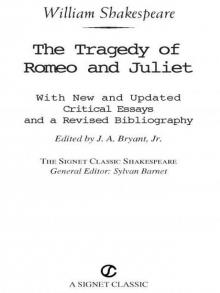 Romeo and Juliet
Romeo and Juliet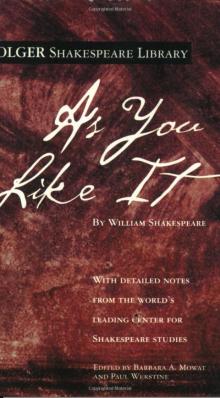 As You Like It (Folger Shakespeare Library)
As You Like It (Folger Shakespeare Library)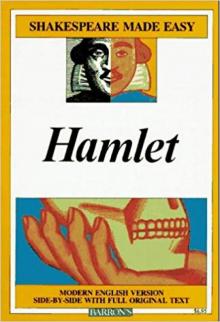 Hamlet
Hamlet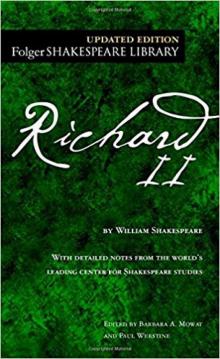 Richard II (Folger Shakespeare Library)
Richard II (Folger Shakespeare Library)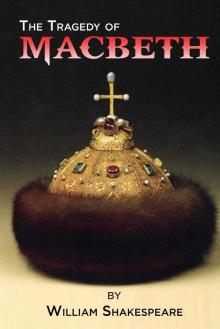 Macbeth
Macbeth Henry V
Henry V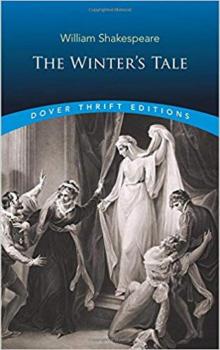 The Winter's Tale
The Winter's Tale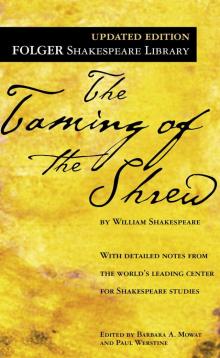 The Taming of the Shrew
The Taming of the Shrew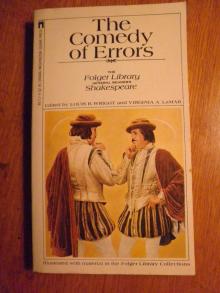 The Comedy of Errors
The Comedy of Errors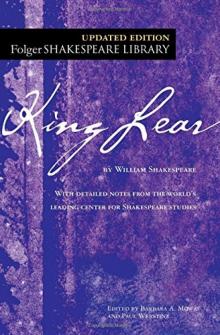 King Lear (Folger Shakespeare Library)
King Lear (Folger Shakespeare Library)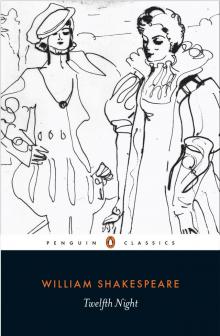 Twelfth Night
Twelfth Night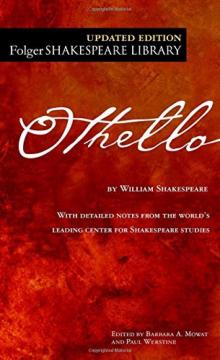 Othello
Othello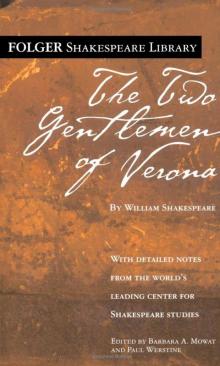 The Two Gentlemen of Verona
The Two Gentlemen of Verona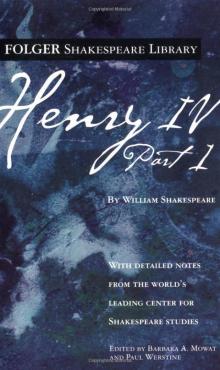 Henry IV, Part 1 (Folger Shakespeare Library)
Henry IV, Part 1 (Folger Shakespeare Library)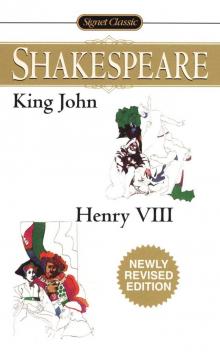 King John/Henry VIII (Signet Classics)
King John/Henry VIII (Signet Classics) The Tempest
The Tempest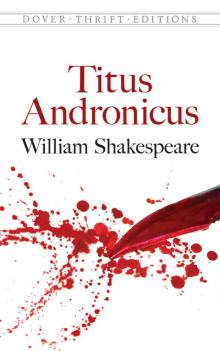 Titus Andronicus (Dover Publications)
Titus Andronicus (Dover Publications)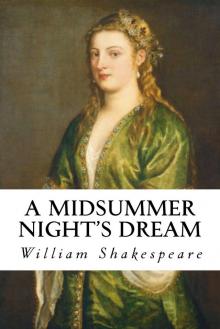 A Midsummer Night's Dream
A Midsummer Night's Dream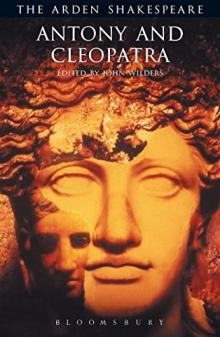 Antony and Cleopatra (Arden Shakespeare: Third Series)
Antony and Cleopatra (Arden Shakespeare: Third Series) The Oxford Shakespeare: Henry IV, Part 2 (Oxford World's Classics)
The Oxford Shakespeare: Henry IV, Part 2 (Oxford World's Classics)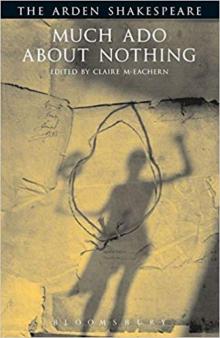 Much Ado About Nothing (Arden Shakespeare: Third Series)
Much Ado About Nothing (Arden Shakespeare: Third Series)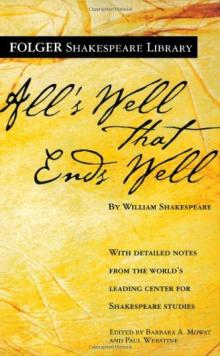 All's Well That Ends Well
All's Well That Ends Well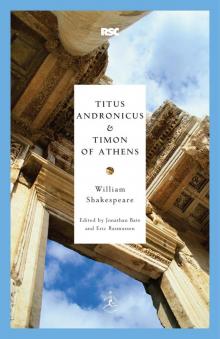 Titus Andronicus & Timon of Athens
Titus Andronicus & Timon of Athens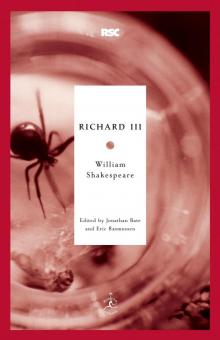 Richard III (Modern Library Classics)
Richard III (Modern Library Classics) Coriolanus
Coriolanus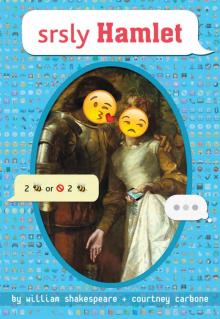 srsly Hamlet (OMG Shakespeare)
srsly Hamlet (OMG Shakespeare)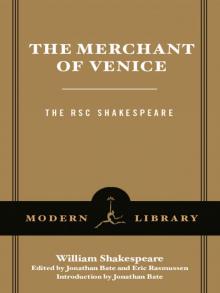 The Merchant of Venice
The Merchant of Venice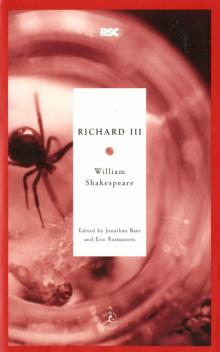 Richard III
Richard III Richard II
Richard II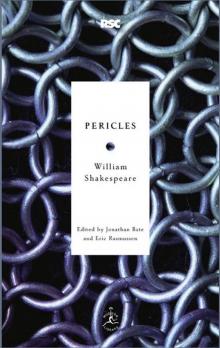 Pericles
Pericles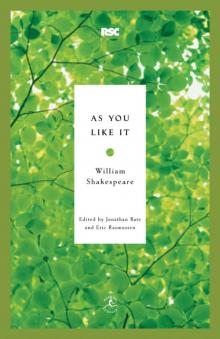 As You Like It
As You Like It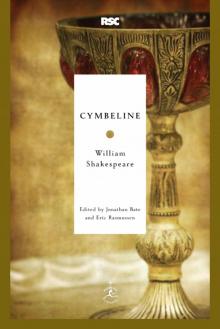 Cymbeline
Cymbeline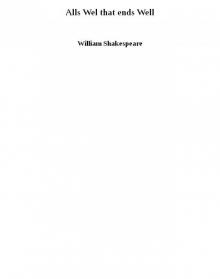 Alls Wel that ends Well
Alls Wel that ends Well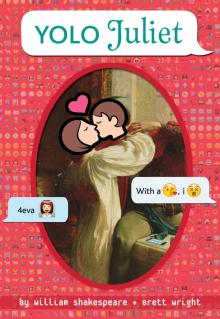 YOLO Juliet
YOLO Juliet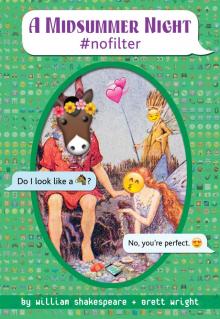 A Midsummer Night #nofilter
A Midsummer Night #nofilter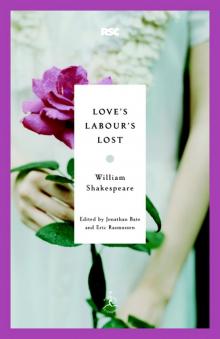 Love's Labour's Lost
Love's Labour's Lost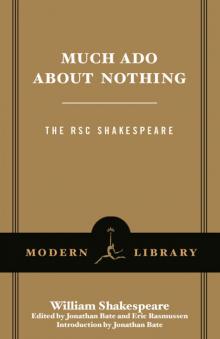 Much Ado About Nothing
Much Ado About Nothing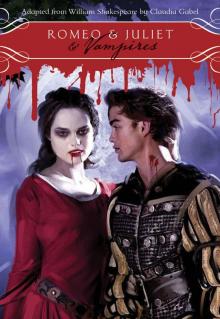 Romeo & Juliet & Vampires
Romeo & Juliet & Vampires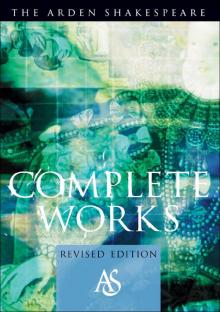 The Arden Shakespeare Complete Works
The Arden Shakespeare Complete Works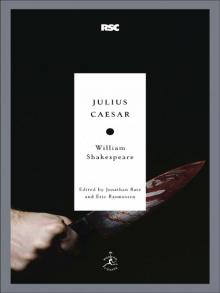 Julius Caesar
Julius Caesar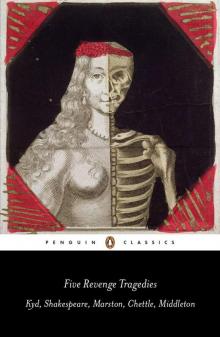 Five Revenge Tragedies: The Spanish Tragedy, Hamlet, Antonio's Revenge, The Tragedy of Hoffman, The Revenger's Tragedy (Penguin Classics)
Five Revenge Tragedies: The Spanish Tragedy, Hamlet, Antonio's Revenge, The Tragedy of Hoffman, The Revenger's Tragedy (Penguin Classics)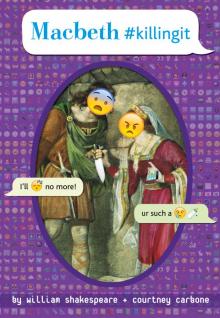 Macbeth #killingit
Macbeth #killingit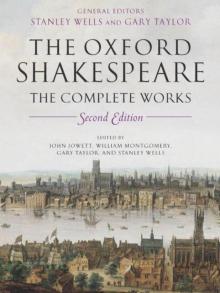 The Oxford Shakespeare: The Complete Works
The Oxford Shakespeare: The Complete Works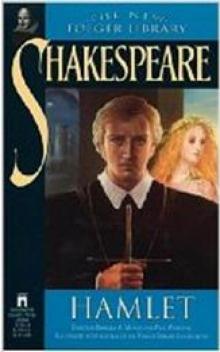 Hamlet, Prince of Denmark (Collins edition)
Hamlet, Prince of Denmark (Collins edition)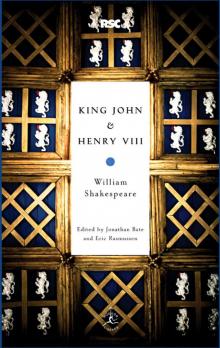 King John & Henry VIII
King John & Henry VIII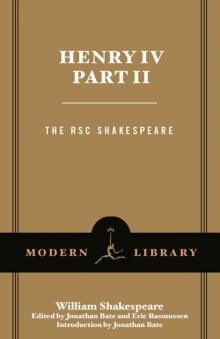 Henry IV, Part 2
Henry IV, Part 2 Complete Plays, The
Complete Plays, The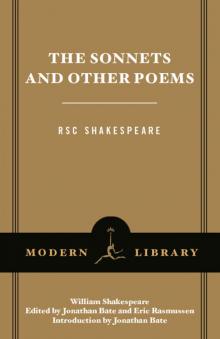 The Sonnets and Other Poems
The Sonnets and Other Poems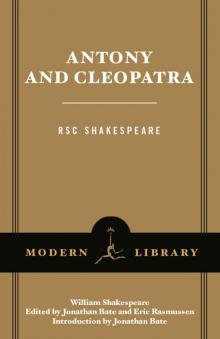 Antony and Cleopatra
Antony and Cleopatra Henry IV, Part 1
Henry IV, Part 1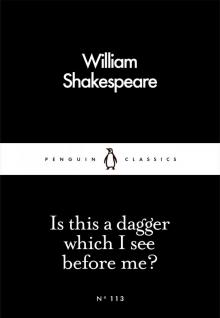 Is This a Dagger Which I See Before Me?
Is This a Dagger Which I See Before Me? The Complete Works of William Shakespeare In Plain and Simple English (Translated)
The Complete Works of William Shakespeare In Plain and Simple English (Translated)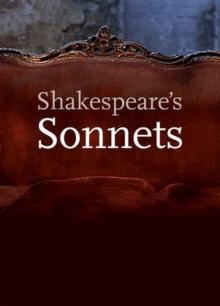 The Sonnets
The Sonnets